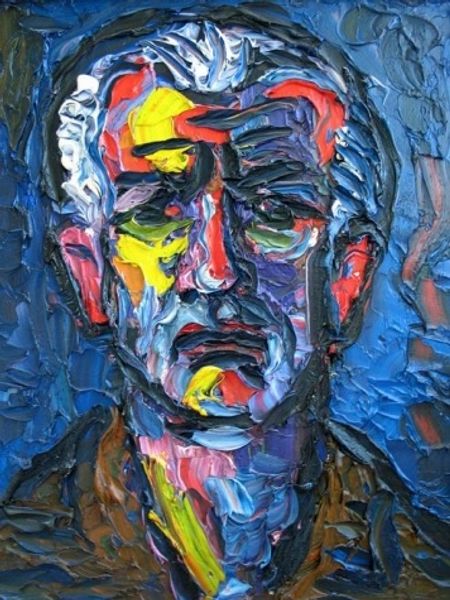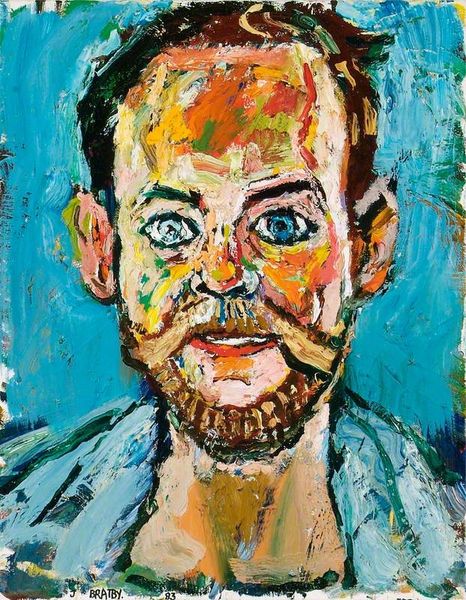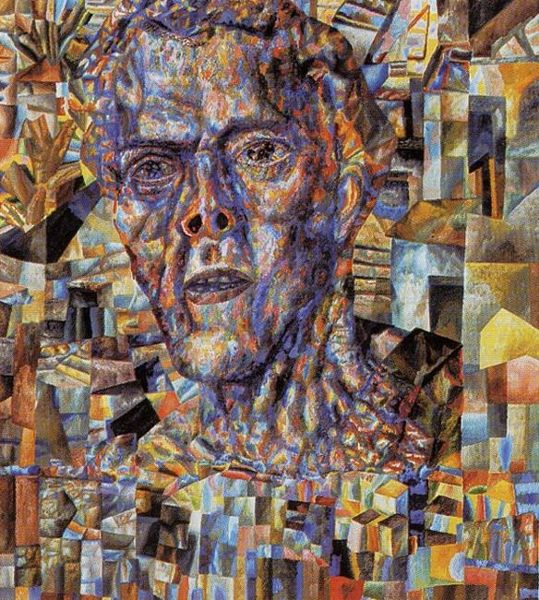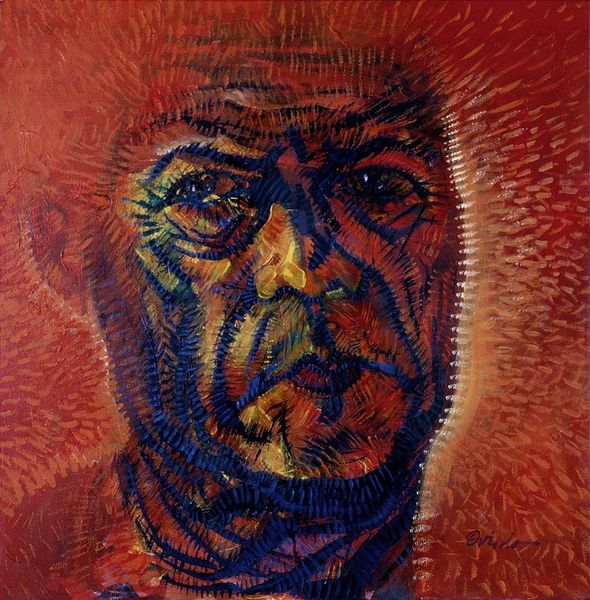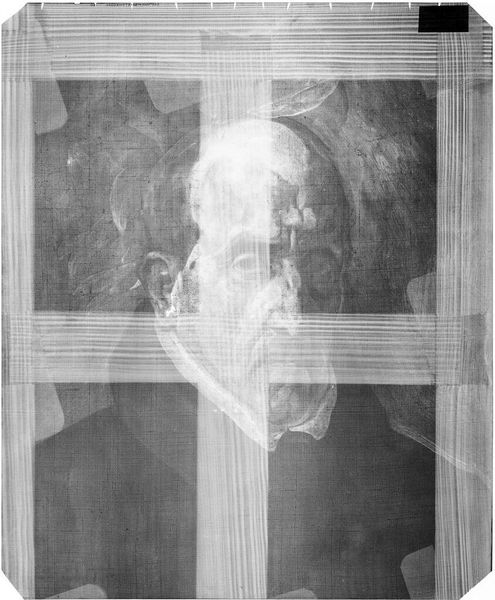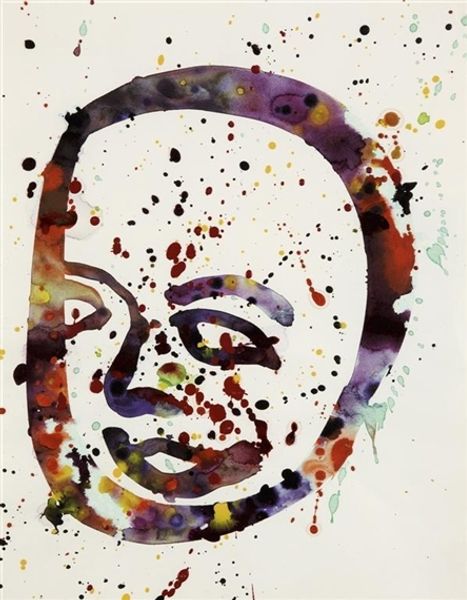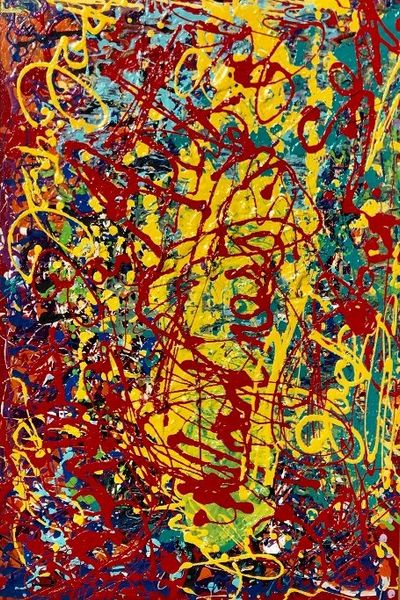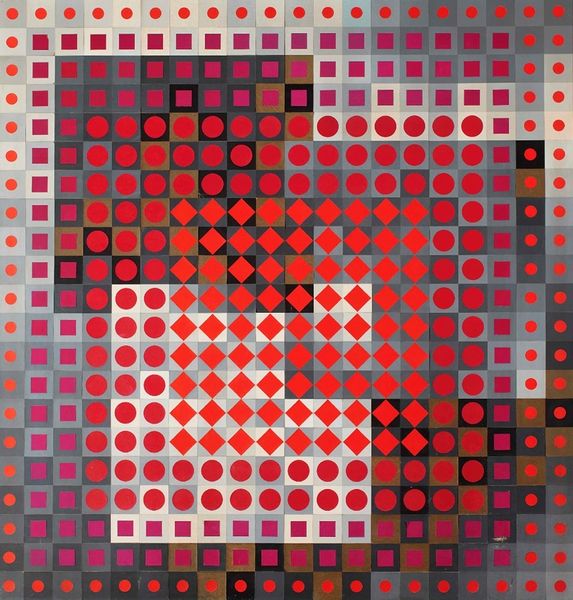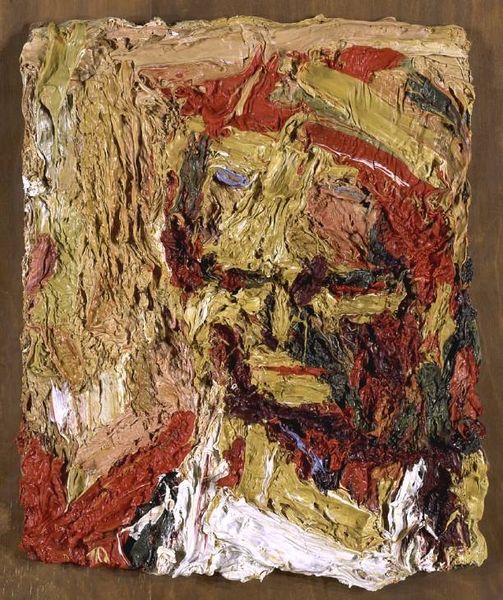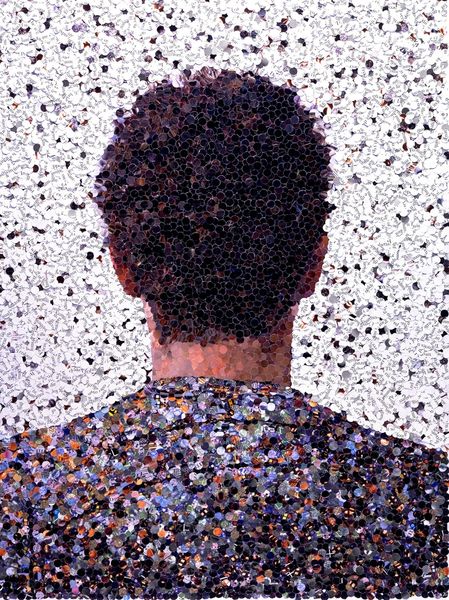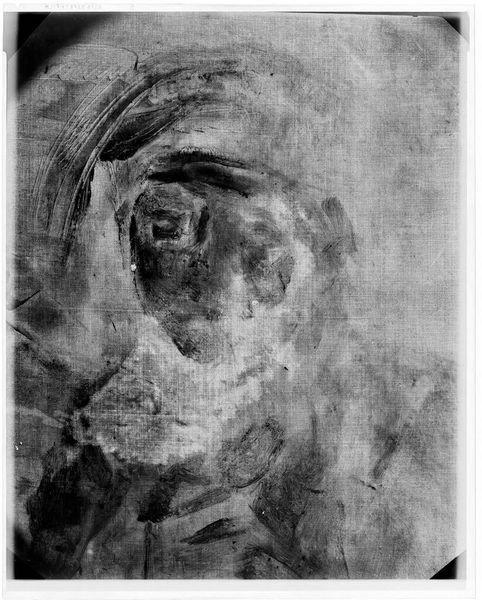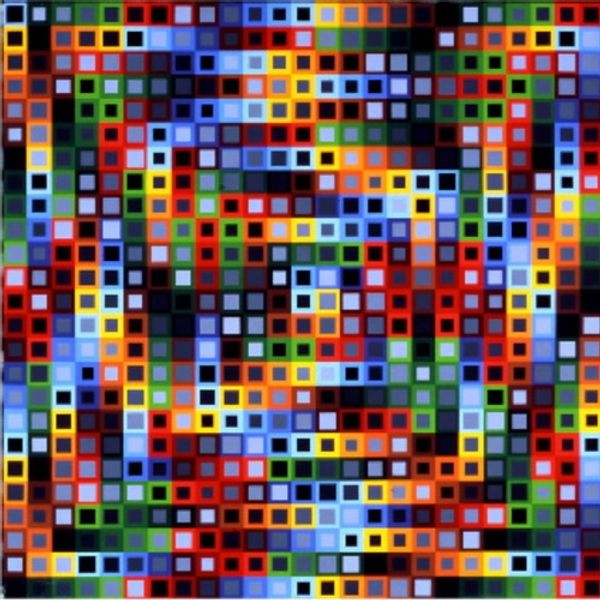
Copyright: Chuck Close,Fair Use
Curator: We are standing before Chuck Close's "Self-Portrait," painted in 2000. The medium is acrylic on canvas. Editor: It has this strange shimmering quality. All of these squares create a very digitized kind of surface, which obscures the underlying humanity. It's really striking and unsettling at first glance. Curator: Indeed. The power of Close’s portraits lies precisely in this tension between the monumental scale of his work, the highly constructed, almost mechanical method, and the evident vulnerability of his subjects, often himself. Note how the overall image emerges from the accumulation of these abstract, cellular forms. Editor: It is the sheer labor that impresses me most. To think of the artist systematically filling each grid with varied colors, shades and forms. It's an incredibly physical undertaking that results in something both intimate and strangely detached. The materials are employed so meticulously, it transcends mere representation, it’s an act of reconstruction. Curator: It raises essential questions about representation and the translation of reality into art. How does this highly mediated approach—layering structure, pattern, and colour—alter our understanding of portraiture? Editor: It deconstructs the genre completely! The process of its creation seems front and center; a methodical examination using paint. This piece challenges ideas of skill versus labor. Close is using what some may call an unsophisticated mode of representation. However, the end product redefines "portrait art" using sheer tenacity and work. Curator: A valuable point. Consider, too, the effects of Close’s disability on his technique. Following a spinal artery collapse in 1988, he had to relearn how to paint, adapting his grid method to suit his changed physical capabilities. This imbues his later work with a new layer of meaning. Editor: Absolutely. When considering Close's process and the inherent material struggle it communicates, it reminds us about what exactly comprises 'art' as work. He asks us to rethink craft, especially its physical undertaking and commitment, when assessing any piece, but especially portraits such as this one. Curator: It certainly demands a reconsideration of our perceptions of representation. The dialogue between precision and accident in this work is very stimulating. Editor: Yes, a piece that invites sustained viewing and thoughtful reflection on art's construction, material means, and relationship to both subject and artist.
Comments
No comments
Be the first to comment and join the conversation on the ultimate creative platform.
